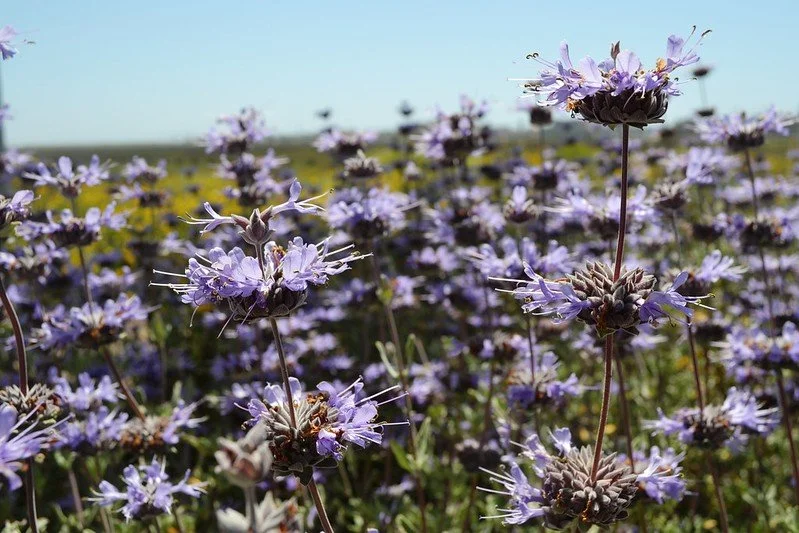Salvia clevelandii
Cleveland Sage
Family: lamiaceae
This shrub, which can potentially reach 6x6’, though usually smaller, is famous for its wonderful, sagey smell. It is often pruned to smaller dimensions. Though this plant is evergreen, sometimes they can look sickly in June, sometimes July, due to dormancy. Plants in full sun with no break in the afternoon (in summer) are most likely to show these signs of dormancy—and the more established the plant is, the less likely it will do this. Plants bloom with spectacular lavender-purple, tubular flowers that are arranged in on disks which are stacked on spikes, spring into summer (sometimes in other seasons in warm weather).
Grow in full to part sun, with moderate water, good drainage. As mentioned, in the summer some afternoon shade is welcomed. Hardy to 10°. Cut back when plants look like they need it.
Flowers attract hummingbirds, butterflies, and many other nectar-seeking insects. Moth larval food plant for the Alfalfa Looper Moth (Autographa californica), Bilobed Looper Moth (Megalographa biloba), Wavy-Lined Emerald (Synchlora aerata), the geometrid Pherne subpunctata, and the plume moth Anstenoptilia marmarodactyla.
Named after a botanist, and has nothing to do with the city of the same name. The genus name Salvia derives from salvēre (to feel healthy, to heal) referring to the medicinal nature of many plants in the genus. The species was named in 1874 by Asa Gray, honoring plant collector Daniel Cleveland, an American lawyer, politician, civic leader and botanist who had taken an interest in the local flora and fauna, sending his collections to Gray over a 20-year correspondence.
This scent of this plant is generally very attractive to people who plant it in places where people may accidentally brush the plant and release its smell. They bundle leafy branches to hang for incense. Plant can be used much like culinary sage, with a deep flavor—use sparingly. The Kumeyaay people uses the Cleveland Sage in many ways: they burn the leaves of the Cleveland Sage for ceremonial smudges and home fumigation. Leaves are also used to treat coughs/chest colds, and to heal infection of poison oak. The plant is also used to season wheat and it’s seeds can be toasted and ground up to produce a pinole.
Native to Southern California and northern Baja California, growing below 3,000 ft. elevation in California coastal sage and chaparral habitat.

